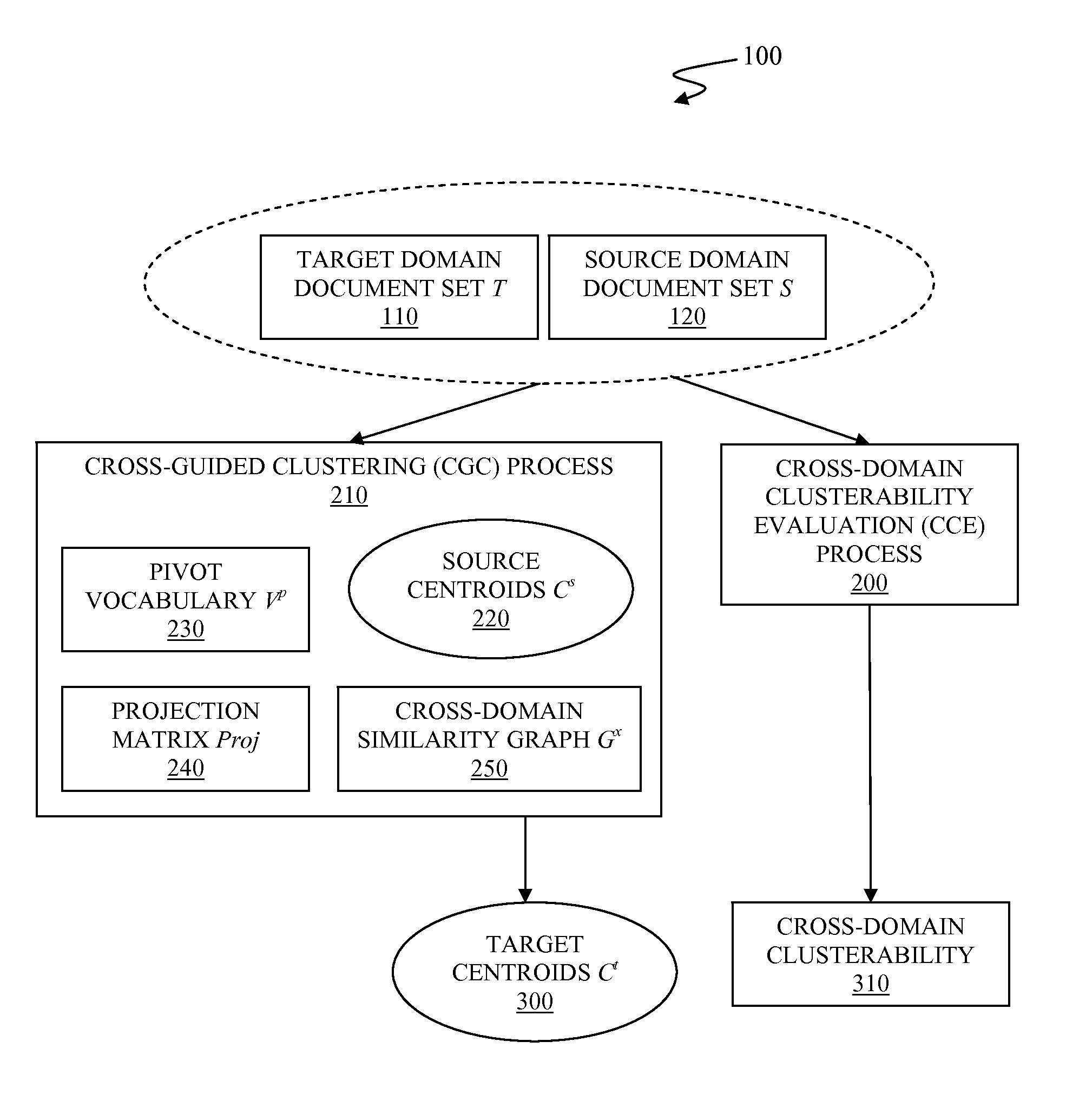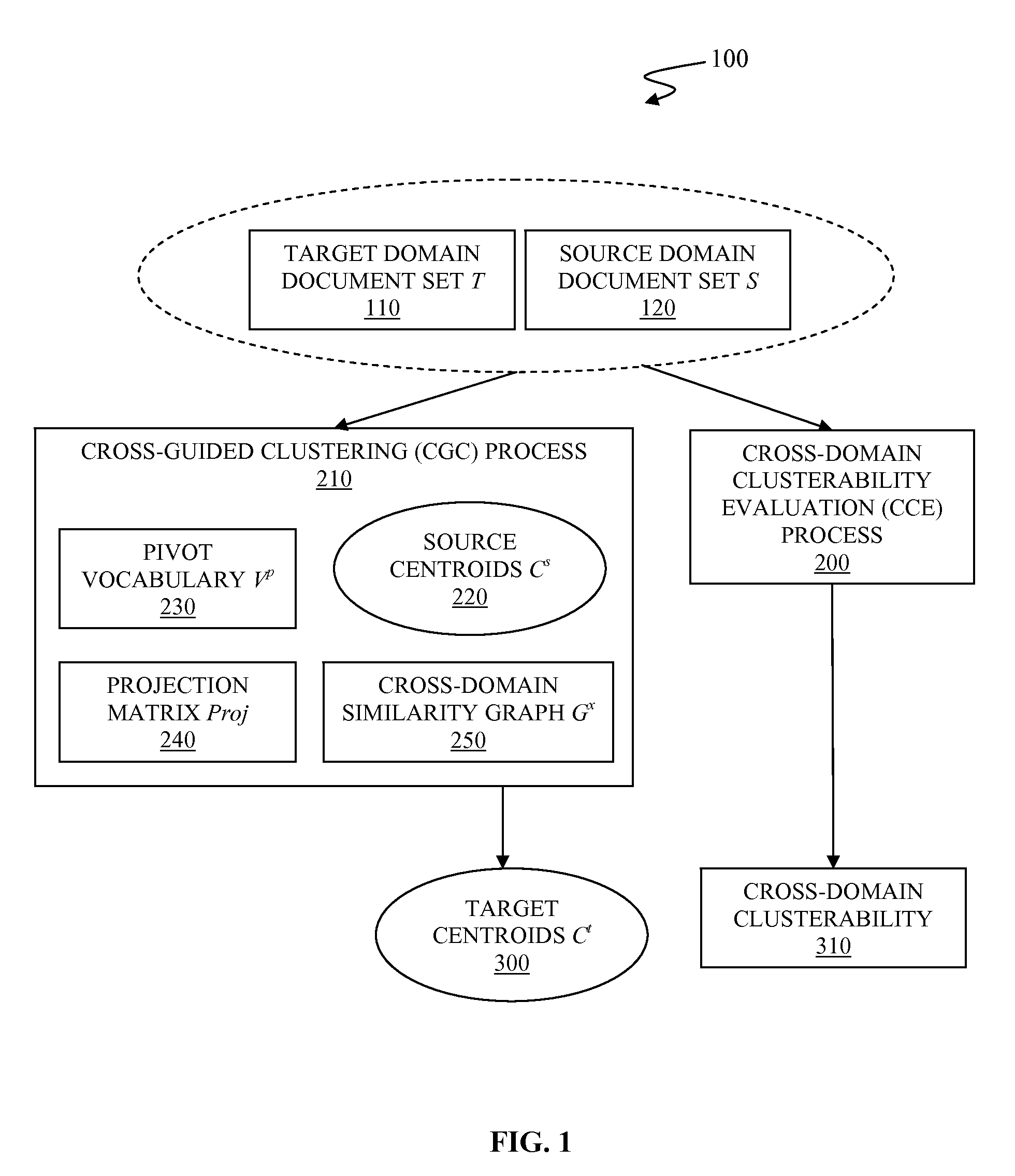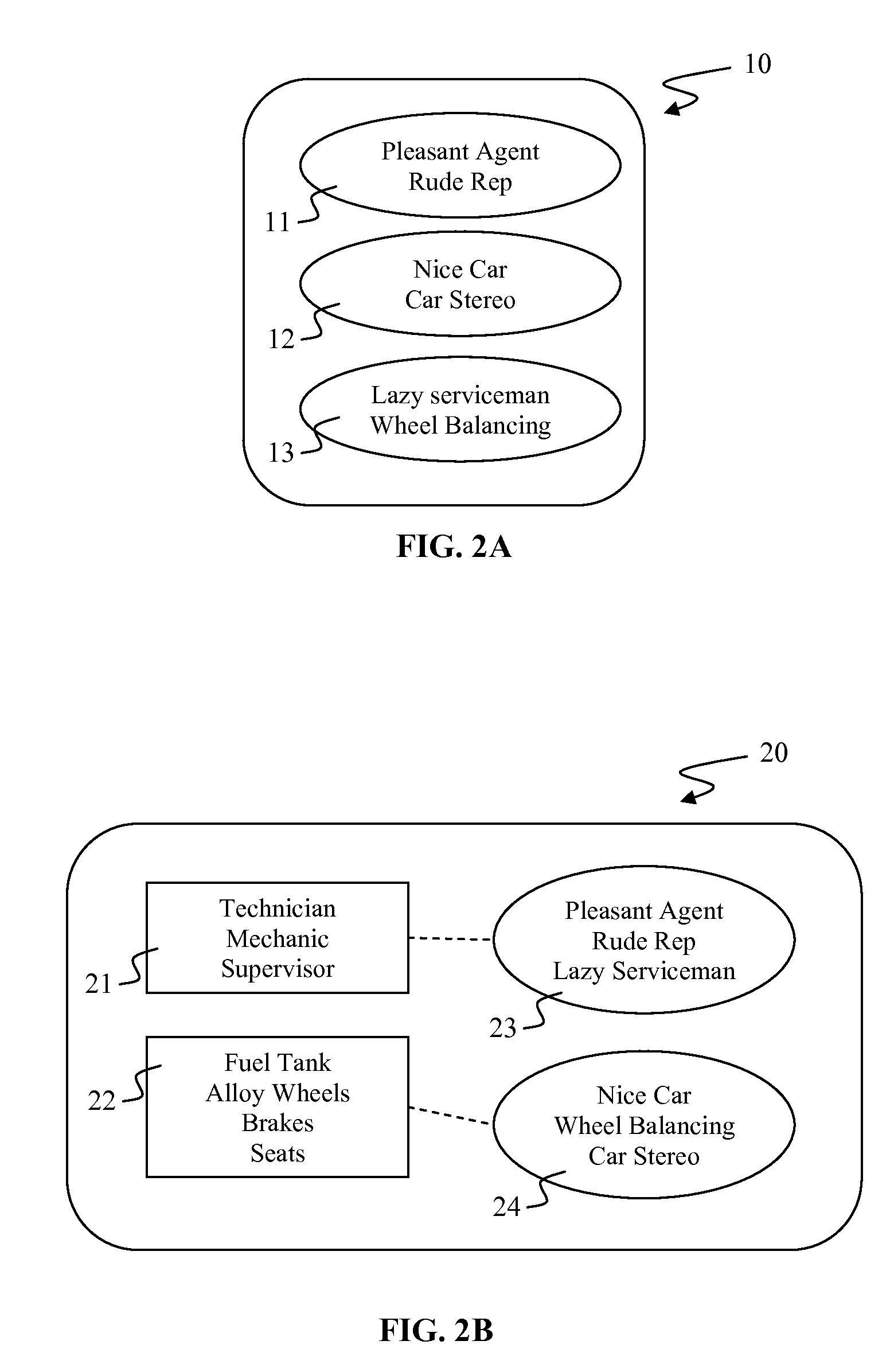Cross-domain clusterability evaluation for cross-guided data clustering based on alignment between data domains
a clustering and data technology, applied in relational databases, web data retrieval, instruments, etc., can solve problems such as clusters that are not useful to human users in devising text analytics solutions
- Summary
- Abstract
- Description
- Claims
- Application Information
AI Technical Summary
Problems solved by technology
Method used
Image
Examples
first embodiment
[0070]In step 365, the CGC finds a best match over the cross-domain similarity graph Gx that is a complete bipartite graph. Consequently, the every target cluster is aligned to one source partition, even in cases of the target cluster is dissimilar to the source partition.
second embodiment
[0071]In step 365, the CGC process disregards all edges in the match with weights below some threshold such that a target cluster is not matched to a dissimilar source partition.
third embodiment
[0072]In step 365, the CGC process defines δx( Cit, Cjs) for Dx( ) as a match weight, which is 1 if Cit is aligned with Cjs, and 0 otherwise. In this embodiment, the weaker the match with the source, the lower is the penalty for divergence from that source centroid.
[0073]After performing step 365, the CGC process proceeds with step 370.
[0074]In step 370, the CGC process updates the target centroids according to a cross-domain update rule to align the target centroids with the source centroids.
[0075]The cross-domain update rule is formulated based on assumptions that all target data items correspond to a target centroid and that the target centroid does not necessarily correspond to a source centroid. The cross-domain update rules are formulated to re-estimate respective target centroid by minimizing divergence of target clusters based on target data items and the source centroids Cs. The cross-domain update rules respective to each target centroid Cit of the target centroids Ct are ...
PUM
 Login to View More
Login to View More Abstract
Description
Claims
Application Information
 Login to View More
Login to View More - R&D
- Intellectual Property
- Life Sciences
- Materials
- Tech Scout
- Unparalleled Data Quality
- Higher Quality Content
- 60% Fewer Hallucinations
Browse by: Latest US Patents, China's latest patents, Technical Efficacy Thesaurus, Application Domain, Technology Topic, Popular Technical Reports.
© 2025 PatSnap. All rights reserved.Legal|Privacy policy|Modern Slavery Act Transparency Statement|Sitemap|About US| Contact US: help@patsnap.com



